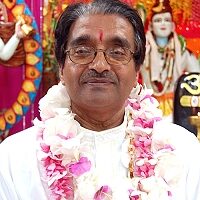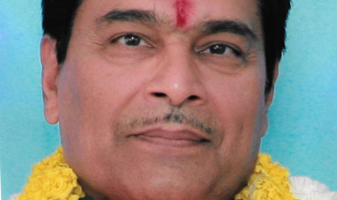The month of Kaartik, from October 18 to November 15, 2024, is a spiritually significant period in the Hindu calendar, offering numerous opportunities to engage in divine worship. This month is celebrated with festivals such as Divali and Goverdhan Puja, marking it as an auspicious time for Hindus. Among the many spiritual observances, the worship of Tulsi Maa is significant.
The culmination of Kaartik is marked by Kaartik Snaan, also known as Kaartik Nahaan, a ritual that honours Bhagavan Vishnu through the performance of Satyanaaraayan puja by the sea. This day is also remembered for the victory of Swami Kartekai over the powerful demon Tarakaasura. After his triumphant battle against unrighteousness, Swami Kartekai bathed in the ocean, a symbolic cleansing of both body and spirit. He proclaimed that anyone who takes a ritual bath in the ocean on this day would be blessed abundantly. The act of Kaartik Snaan is more than a mere ritual—it is an act of surrender, a visarjan, where we offer ourselves to the Lord, seeking purification from accumulated sins and negative karmas.
Swami Kartekai represents the infinite spiritual essence within each of us. The immersion in water during Kaartik is symbolic of the deep need to immerse our lives in spiritual practices rather than material pursuits. It serves as a reminder to transform our lives and realise our divine nature, transcending negative qualities and embracing the flow of spiritual abundance. This ritual imbues us with qualities such as serenity, faith, endurance and the renunciation of selfish desires, fostering a state of purified devotion where we advance towards realising the divinity within.
Kaartik Snaan emphasises the development of true spirituality and reflects the multifaceted nature of the Divine. It highlights a key tenet of Sanaatan Dharma: there are numerous paths to reach the Divine, and incorporating different modes of worship can enrich our spiritual journey.
Swami Kartekai’s divine form is full of profound symbolism. Known by many names—Murugan, Skanda, Subramanyam, Shadaanana and Sena-Pati—he is mythologically the younger son of Lord Shiva and Mother Parvati, born from six sparks emanating from Lord Shiva’s forehead. His vehicle, a peacock named Paravani, represents the control of lower human tendencies, such as ego and false pride. His spear, a powerful symbol, destroys the negative tendencies (vaasanas) in devotees. His consort is Deivayanai.
Swami Kartekai, revered as the God of War, led the charge against evil forces and destroyed the demon Tarakaasura. Known as Sena-Pati, the commander of divine forces, he embodies the destruction of internal and external evils, blessing us with divine knowledge. His brother, Shri Ganesh, removes obstacles and symbolises wisdom and discernment, while Kartekai stands as the principle that conquers internal negativity.
The number six is deeply associated with Kartekai. His six faces symbolise divine qualities: felicity, fullness, immortal youth, endless energy, protection from evil and spiritual splendour. These qualities are reflected in God’s avatars and resonate within devotees who aspire to spiritual excellence.
The six heads of Kartekai also represent the six chakras, the spiritual energy centres within the body. The journey from the base chakra (Muladhaara) to the crown chakra (Sahasraara), where enlightenment is realised, requires the destruction of internal evils and the cultivation of true spiritual knowledge. This spiritual battle is the essence of Skanda, which is why he is also known as Subramanyam, the omniscient Spirit of the universe.
Kartekai is closely associated with Agni Devta, the fire god who purifies and elevates the soul along the spiritual ladder of the chakras. As we honour Swami Kartekai during Kaartik, we are, in essence, worshipping the diverse forms of divinity that manifest in our lives.
May the month of Kaartik inspire us to delve deeper into spiritual practices, to purify our hearts and minds, and to emerge victorious over all obstacles on our path to divine realisation.



